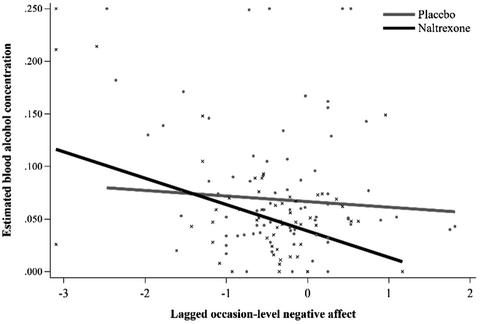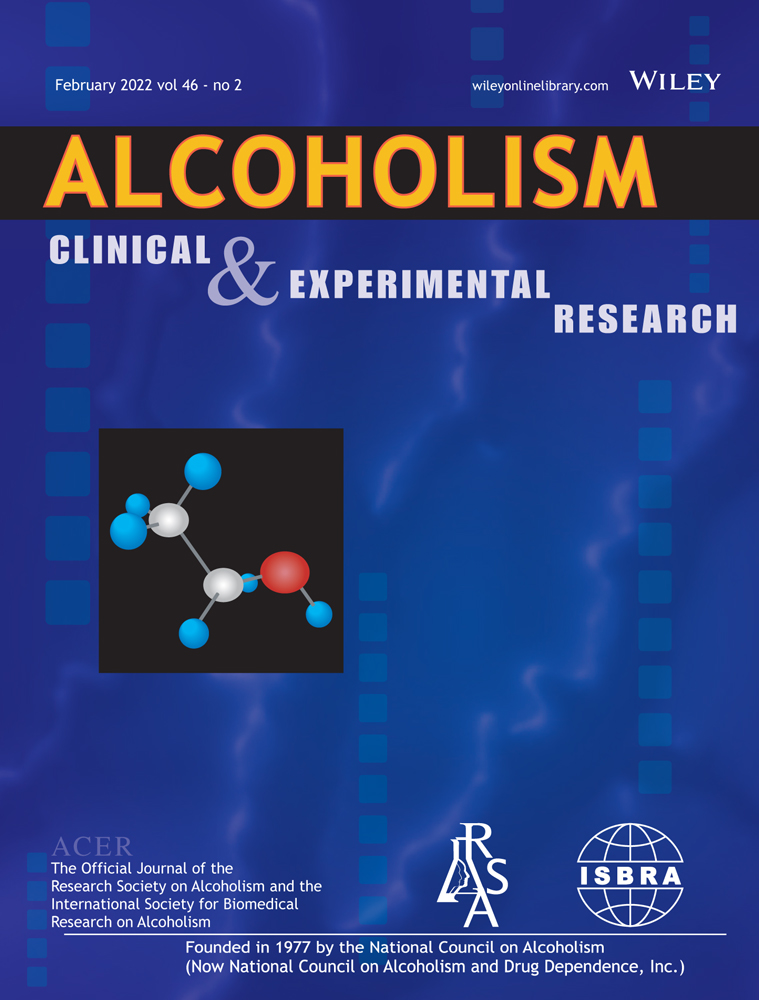Naltrexone moderates the association of alcohol use and affect among adolescent drinkers in daily life
Funding information
The National Institutes of Health supported this research (AA017273, AA026326, AA028414, AA07459, DA016184).
Abstract
Background
Naltrexone is an efficacious medication for the treatment of alcohol use disorder in adults. As an opioid receptor antagonist, naltrexone blocks activation of the endogenous opioid system, which is involved in the affectively reinforcing properties of substance use. Few studies, however, have examined the moderating effect of naltrexone on the association between affect and alcohol use. Additionally, most existing research on naltrexone has been with adults in the human laboratory.
Method
We conducted a secondary analysis of ecological momentary assessment data from a randomized, double-blinded, placebo-controlled cross-over study that compared naltrexone (50 mg/daily) and placebo in 26 adolescents (15 to 19 years old) who exhibited problematic drinking patterns. Multilevel models tested whether naltrexone moderated associations of alcohol use with both positive and negative affect (PA, NA).
Results
Results indicated that, during naltrexone treatment, greater estimated blood alcohol concentration (eBAC) levels were associated with greater NA further into drinking episodes. In turn, greater NA after the first drink of an episode was associated with reduced subsequent eBAC values during naltrexone treatment. Low PA was also associated with lower subsequent eBAC levels in the naltrexone condition after the first drink.
Conclusions
These findings support the idea that naltrexone can disrupt the association between affect and alcohol use, effects that emerge later in drinking episodes. Greater attention to the effects of naltrexone on affect and reinforcement may help to tailor psychotherapy to maximize the benefits of naltrexone. However, in the present study, as most drink reports were in the first 2 h of the drinking episode and participants reported affect only at the first three end-drink reports of a drinking episode (limiting the number of drinks reported), we had reduced power to detect effects in the continuation phase. Thus, replication of the findings is needed using a design that assesses the impact of naltrexone across the entire episode.
Graphical Abstract
We examined whether naltrexone disrupts the affectively reinforcing properties of alcohol use in the daily life of adolescents with alcohol-related problems. Naltrexone moderated the bidirectional association of alcohol use and affect in adolescents, with effects emerging later in drinking episodes. When taking naltrexone, participants reported more negative affect after drinking and drank less in response to positive affect (at drink initiation) and negative affect (as drinking continued).
CONFLICT OF INTEREST
We have no conflict of interest to disclose.





